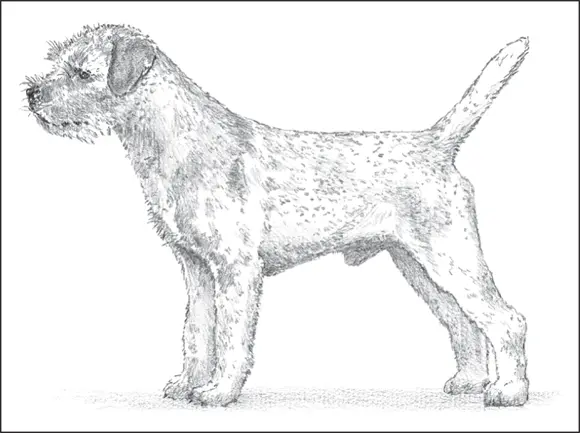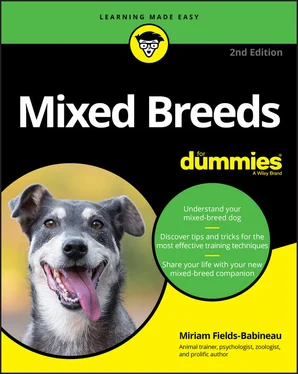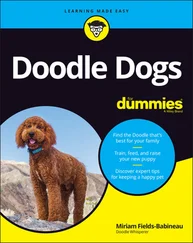1 ...8 9 10 12 13 14 ...17 Sporting dogs vary from medium to large — 25 to 90 pounds, depending on the breed. All of them have ears that fold over. The retrievers have webbed feet to aid in swimming and also have quick-dry coats. The Setters have medium-length coats with feathering on their legs and tails. Spaniels have fuller coats, also with feathering on their legs and tails. Though many of the Spaniel and Pointer breeds have cropped tails, they’re born with long ones.
Sporting dogs are athletic, high energy, intelligent, and hard working. They need a job; if they don’t have a job, they’ll drive you crazy trying to find one for themselves. They love to sniff out game trails, single mindedly tracking until they find the source. If there’s something to get wet in, even a mud puddle, you can be sure they’ll find it — and you won’t be able to keep them out of it.
All the breeds in the Sporting Group are easily trained and thrive on structure.
Ain’t nothin’ but a hound dog: The Hound Group
Though the Hound Group, which according to the AKC is made up of 23 different breeds, includes some of the first breeds ever developed to aid hunters, they aren’t the type to point, flush, or retrieve (see the Sporting Group). Instead, Hound dogs track scents. They’re single-minded when it comes to locating their targeted prey.
Hounds are divided into two categories: those who hunt by scent and those who hunt by sight (called sighthounds).
The most common hounds, and those often found within mixed-breed dogs, are the American Foxhound, Bassett Hound, Beagle (see Figure 3-2), Dachshund, English Foxhound, Greyhound, Norwegian Elkhound, Rhodesian Ridgeback, and several types of Coonhounds. Except for the Greyhound, these are all scent hounds, tracking through odor left on the ground.

Illustration by Barbara Frake
FIGURE 3-2:The Beagle is one of the more popular Hound breeds found in mixed-breed dogs. Don’t let his cute looks fool you — he’s stubborn and can be hard to train.
Many Hounds have long, silky ears; long muzzles; and large rib cages. Some have predominantly short coats, while a few, such as the Afghan Hound, have long coats that require a lot of maintenance.
Most of the breeds within the Hound Group tend to be stubborn, single-minded, and difficult to train unless properly motivated. Sighthounds (like the Greyhound) are generally energetic; the slightest movement catches their attention.
While occasionally aggressive on the hunt, Hounds are rarely aggressive to people, but they will try your patience.
Workin’ like a dog: The Working Group
The AKC recognizes 25 breeds in the Working Group. Most of the dogs in this group are large, bold, and hardy (see Figure 3-3). They were bred to work long hours though not all of them have high energy levels. Working dogs guard, pull heavy loads, herd, and in recent years, search and rescue.

Illustration by Barbara Frake
FIGURE 3-3:The Bernese Mountain Dog is not commonly seen in mixed breeds, but he is a great representation of the Working Group.
Because most of them are very popular as pets, they’re often seen within mixed-breed dogs. The most popular breeds in this group are the Alaskan Malamute, Boxer, Doberman Pinscher, Great Dane, Rottweiler, and Siberian Husky. Though less popular, the Akita, Mastiff, and Saint Bernard are also found within many mixed breeds.
Working dogs are large boned, strong bodied, and strong willed. Many were bred to withstand extreme weather conditions, such as Arctic temperatures or the cold of Northern Europe.
Working dogs have extreme intelligence and steadfast working ethics. They are hardy, often energetic, and make great pets as long as they’re given appropriate guidance. Some of these breeds were bred to fight other dogs or protect people, so they have the instinct to be assertive in many situations and can be very territorial.
 Working breeds do not do well if left alone for long periods of time or tied up. This might lead to aggressive and destructive behavior.
Working breeds do not do well if left alone for long periods of time or tied up. This might lead to aggressive and destructive behavior.
A mix containing any of these breeds must have regular obedience training and maintain strict scheduling. Otherwise, the dog believes he’s in charge of your household — and you really don’t want to deal with a large, powerful dog who thinks he’s in charge.
On the other hand, given a job to perform, Working breeds put their entire hearts into their work. They want approval from their human guardians, but the activity alone is positive reinforcement.
Tenacious terriers: The Terrier Group
The AKC recognizes 27 breeds in the Terrier Group. Terriers are small-game hunters. Due to their genetic disposition to go after difficult game, they’re tenacious and single-minded while working; though their work is usually protecting their household and all those in it, while telling everyone what to do and how to do it.
The most common Terrier breeds seen within mixed-breed dogs are the Airedale Terrier, Cairn Terrier, Jack Russell Terrier (now called the Parson Russell Terrier), Miniature Schnauzer, Staffordshire Bull Terrier, the Pit-Bull Terrier (not a recognized AKC breed, but still a popular pet and recognized by the United Kennel Club), Scottish Terrier, and West Highland White Terrier.
Most of the terriers are medium to small in stature (see Figure 3-4). Their coats are generally short and smooth or wiry and rough, with the exception of the Soft Coated Wheaten Terrier, Sealyham Terrier, and Skye Terrier, all of whom have longer, silkier coats than the other Terrier breeds.

Illustration by Barbara Frake
FIGURE 3-4:The Border Terrier is not commonly found in mixed-breed dogs, but they’re similar in size and coat to dogs such as the Cairn Terrier and Norwich Terrier.
There’s really no structural norm among the Terrier breeds. Their common threads lie more in personality. However, the taller of the Terriers — Airedale Terrier and Kerry Blue Terrier — do have some structural similarities in their long muzzles, fold-over ears, long necks, and long legs. The American Staffordshire Terrier and Bull Terrier have large egg-shaped heads and very muscular bodies with short smooth coats. The Scottish, Cairn, West Highland White, Norfolk, Norwich, Australian, and Border Terriers have short legs, long bodies, medium to long muzzles, and sharp high-set eyes, with short to medium-length tails. All these breeds also have a wiry, medium-length coat.
Terriers are high energy, rebellious to authority, and more assertive than any other breed group. When riled up, they don’t readily back down. However, they do learn quickly as long as they’re properly motivated. Terriers require consistent training and guidance every day of the week, every week of the year. Terriers are easily excited, turning from upset-to-see-you-go to attacking the nearest creature they see because they were upset-to-see-you-go.
The last thing you ever show a Terrier is that you are apprehensive or hesitant. This is all they need to fully dominate you in every way — from how they prefer to be touched to possessive aggression and worse.
Читать дальше



 Working breeds do not do well if left alone for long periods of time or tied up. This might lead to aggressive and destructive behavior.
Working breeds do not do well if left alone for long periods of time or tied up. This might lead to aggressive and destructive behavior.











